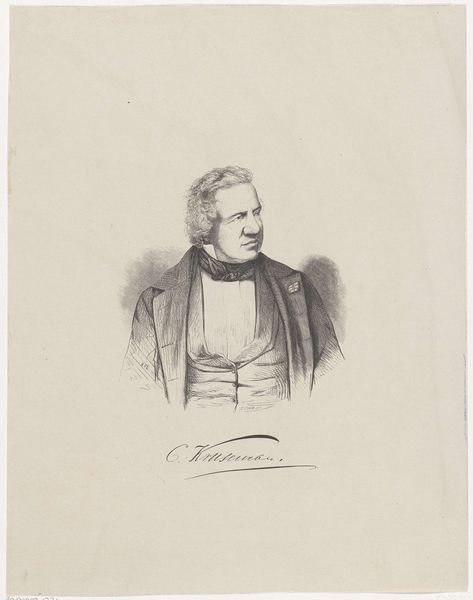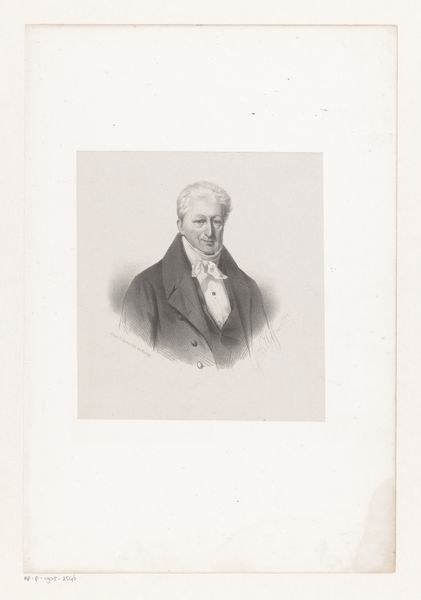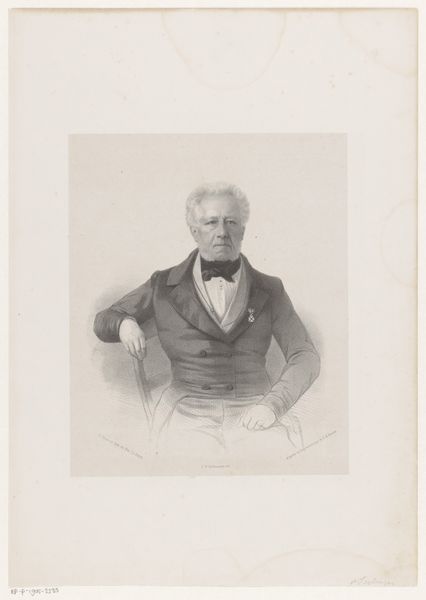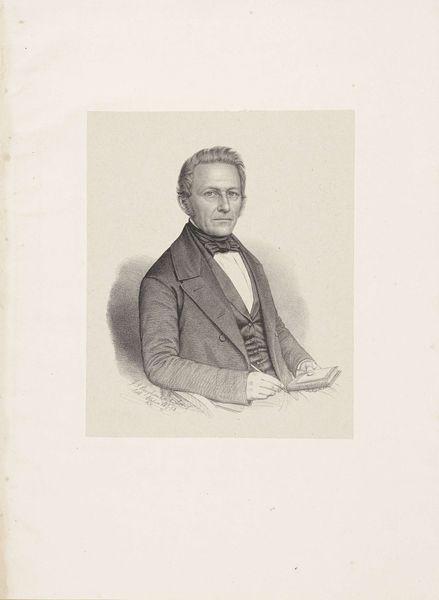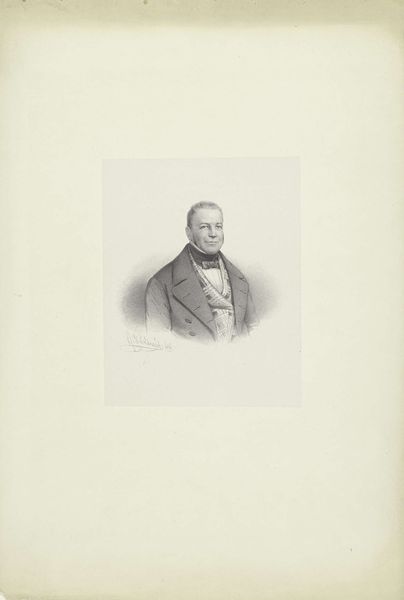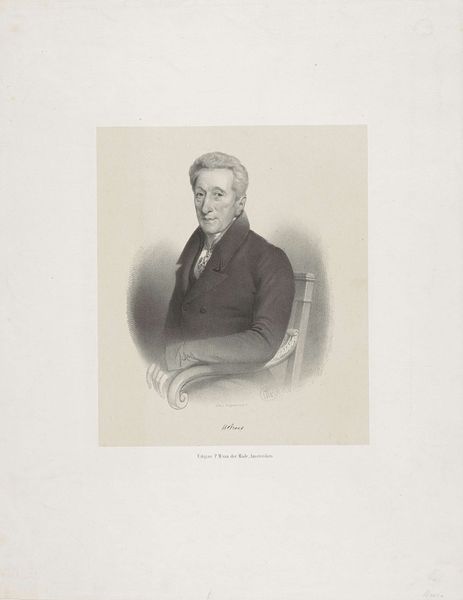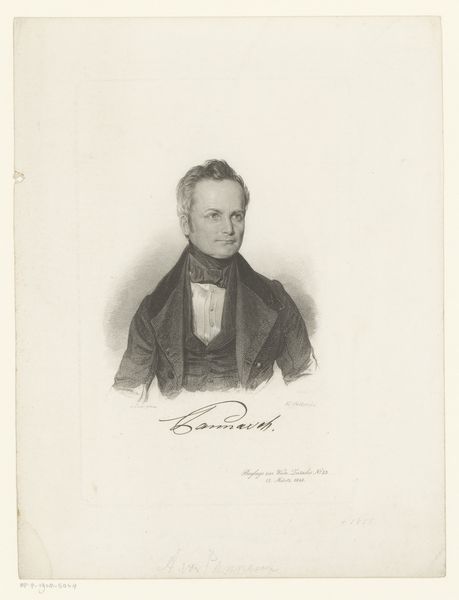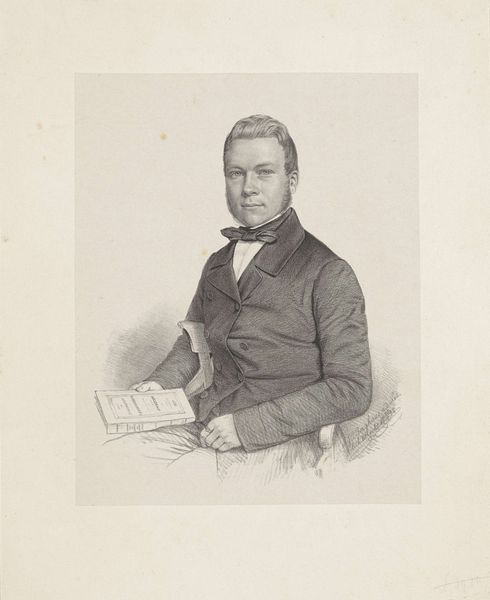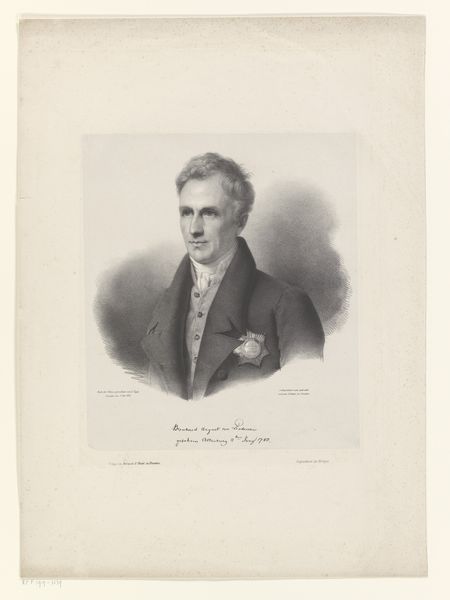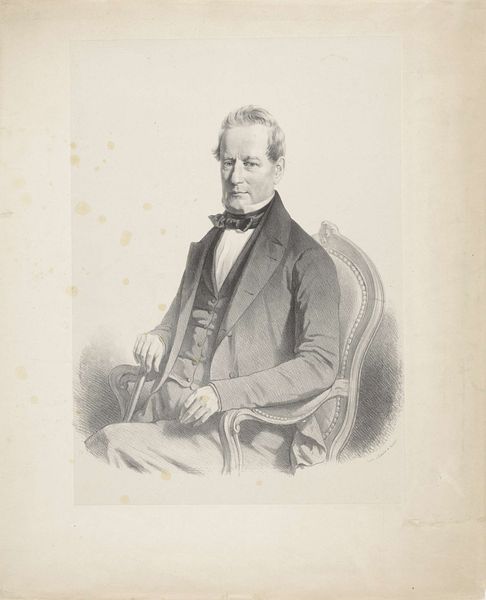
drawing, pencil
#
portrait
#
pencil drawn
#
drawing
#
neoclacissism
#
pencil sketch
#
pencil drawing
#
romanticism
#
pencil
Dimensions: height 515 mm, width 374 mm
Copyright: Rijks Museum: Open Domain
Editor: This is Henri Grevedon’s "Portrait of Alexander von Humboldt," made in 1824 using pencil. It has a sort of… restrained energy about it, wouldn't you say? The rendering is so controlled, but Humboldt's expression hints at something more. What do you see in this piece? Curator: Initially, I'm drawn to the meticulous execution of line and the considered tonal gradations achieved through pencil. Observe how Grevedon employs hatching and cross-hatching to delineate form and volume, especially in the subject's face and coat. Notice also how the sharp line gives definition, and fades into atmospheric nothingness in the shoulders. Are you seeing the composition’s success in achieving both clarity and nuance? Editor: Absolutely. The detail in his face and hair is amazing compared to the smudginess of his shoulders! The focus is all on the expression. Curator: Precisely. And note how the stark contrast between the meticulously rendered face and the almost ethereal background isolates Humboldt, drawing the viewer's eye directly to his gaze. The slight asymmetry in his expression is also quite remarkable; consider the nuanced balance and tension this creates. Do you appreciate that formal choice? Editor: I hadn't consciously noticed the asymmetry, but now that you point it out, it makes the portrait feel so much more…alive. And that tension you mentioned really stands out! I guess I was focusing too much on historical context initially and missed these elements. Curator: Indeed. By focusing on the formal elements, the artistic strategies employed, we begin to appreciate the inherent expressive power of the piece, quite beyond any contextual knowledge we might bring to it. Editor: This really highlights the power of close visual analysis. Thanks!
Comments
No comments
Be the first to comment and join the conversation on the ultimate creative platform.
